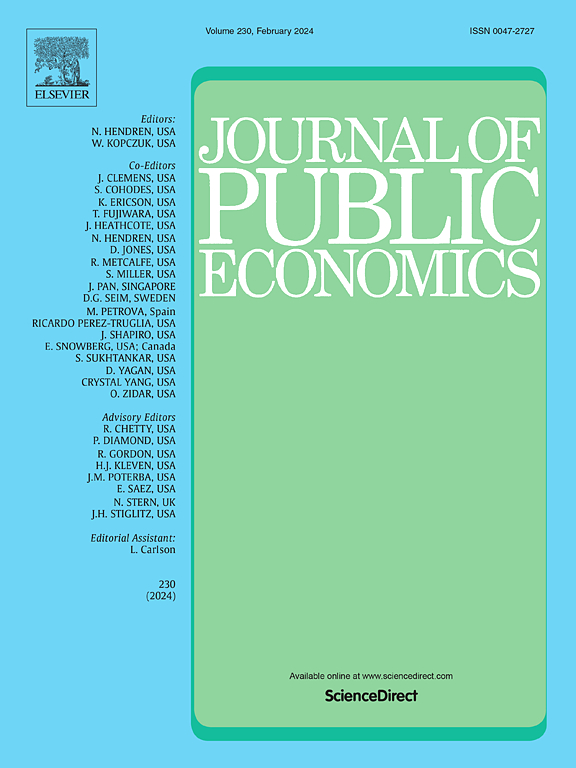Avoidance Responses to the Wealth Tax
IF 4.8
1区 经济学
Q1 ECONOMICS
引用次数: 0
Abstract
As a consequence of the Great Recession, the Spanish government reintroduced the Wealth Tax in 2011. We exploit the variation in wealth tax exposure to analyse taxpayers’ responses to this reintroduction. While facing higher wealth taxes did not discourage savings, results indicate that a 0.1 percentage point increase in the average tax rate leads to a reduction in taxable wealth of 3.21% over 4 years. In particular, the reduction in taxable wealth comes from taking advantage of exemptions, mostly business-related. Thus, the reintroduction induced avoidance. Taxpayers also take advantage of the limit on tax liability through a change in their asset and income composition. By far, this latter source of avoidance accounts for the greatest impact on tax revenues (92.6%). The impact of these avoidance strategies on revenue collected was far from negligible, since according to our estimates they represent a 2012-2015 revenue loss of 2.75 times the 2011 estimated wealth tax revenues. These findings should be useful to policymakers and administrations considering the implementation of a wealth tax, as they illustrate the pitfalls to be circumvented.
避税对财富税的回应
由于经济大衰退,西班牙政府在2011年重新引入了财富税。我们利用财富税风险的变化来分析纳税人对这一重新引入的反应。虽然面临更高的财富税并没有阻碍储蓄,但研究结果表明,平均税率每提高0.1个百分点,4年内应税财富就会减少3.21%。特别是,应税财富的减少来自于利用豁免,主要是与商业有关的豁免。因此,重新引入诱导回避。纳税人还可以通过改变其资产和收入构成来利用纳税义务的限制。到目前为止,后一种避税方式对税收收入的影响最大(92.6%)。这些避税策略对税收收入的影响远非可以忽略不计,因为根据我们的估计,2012-2015年的税收损失是2011年估计财富税收入的2.75倍。这些发现对考虑实施财富税的政策制定者和政府部门应该是有用的,因为它们说明了需要规避的陷阱。
本文章由计算机程序翻译,如有差异,请以英文原文为准。
求助全文
约1分钟内获得全文
求助全文
来源期刊

Journal of Public Economics
ECONOMICS-
CiteScore
14.10
自引率
2.00%
发文量
139
审稿时长
70 days
期刊介绍:
The Journal of Public Economics aims to promote original scientific research in the field of public economics, focusing on the utilization of contemporary economic theory and quantitative analysis methodologies. It serves as a platform for the international scholarly community to engage in discussions on public policy matters.
 求助内容:
求助内容: 应助结果提醒方式:
应助结果提醒方式:


